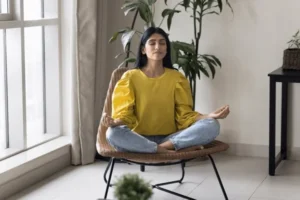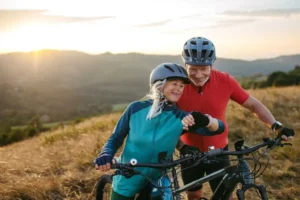When it comes to selecting the right bumper plates for your gym, the choice between urethane and rubber can be pivotal. Each material offers distinct advantages and potential drawbacks, making it essential to understand their characteristics thoroughly. This article delves into the specifics of urethane and rubber bumper sets, providing a detailed comparison to help you make an informed decision.
Also explore Crumb Bumper plates vs. Regular Bunper plates
Table of Contents
ToggleDurability and Longevity
Urethane Bumper Sets: Built to Last
Urethane bumper sets are renowned for their exceptional durability. Urethane, a type of polymer, is highly resistant to wear and tear, making it an ideal choice for high-traffic gyms. The material’s robustness ensures that the plates maintain their integrity even after extensive use. Historical data from the fitness industry shows that urethane plates can last significantly longer than their rubber counterparts, often retaining their appearance and functionality for years.
Rubber Bumper Sets: Reliable but Limited
Rubber bumper sets, while durable, do not match the longevity of urethane. Rubber is prone to chipping and cracking over time, especially with heavy use. However, rubber plates are still a reliable option for many gyms, particularly those with budget constraints. They offer a good balance between cost and durability, making them a popular choice for home gyms and smaller fitness centers.
Resistance to Wear and Tear
Urethane: Superior Resistance
One of the standout features of urethane bumper sets is their resistance to wear and tear. Urethane’s molecular structure provides excellent protection against abrasions, cuts, and impacts. This resistance is particularly beneficial in environments where plates are frequently dropped or mishandled. Urethane’s ability to withstand such conditions without significant damage makes it a preferred choice for commercial gyms.
Rubber: Adequate but Inferior
Rubber bumper sets offer decent resistance to wear and tear but fall short compared to urethane. Over time, rubber plates can develop cracks and chips, especially if used on rough surfaces. While they are still a viable option for many, their susceptibility to damage means they may require more frequent replacement, adding to long-term costs.
Shock Absorption
Rubber: The Shock Absorption Champion
Rubber bumper sets excel in shock absorption. The natural elasticity of rubber allows it to absorb impacts effectively, reducing the stress on both the plates and the lifting platform. This property makes rubber plates ideal for high-impact activities such as Olympic lifting and CrossFit, where plates are frequently dropped from overhead positions.
Urethane: Good but Not the Best
While urethane bumper sets offer good shock absorption, they do not match the performance of rubber in this regard. Urethane’s rigidity, which contributes to its durability, also means it is less effective at absorbing shocks. However, for many users, the trade-off between durability and shock absorption is acceptable, especially in environments where plates are not dropped as frequently.
Cost Considerations
Urethane: A Premium Investment
Urethane bumper sets come with a higher price tag compared to rubber. The superior durability and resistance to wear justify the cost, making urethane plates a long-term investment. For commercial gyms and serious lifters, the initial expense is often offset by the reduced need for replacements and maintenance.
Rubber: Budget-Friendly Option
Rubber bumper sets are generally more affordable, making them an attractive option for budget-conscious buyers. While they may not last as long as urethane plates, their lower cost allows for easier replacement when necessary. This affordability makes rubber plates a popular choice for home gyms and smaller fitness centers.
Maintenance Requirements
Urethane: Low Maintenance
Urethane bumper sets require minimal maintenance. Their resistance to wear and tear means they do not need frequent inspections or repairs. A simple wipe-down with a damp cloth is usually sufficient to keep them in good condition. This low maintenance requirement is a significant advantage for busy gyms where time and resources are limited.
Rubber: Moderate Maintenance
Rubber bumper sets require more maintenance compared to urethane. Regular inspections are necessary to check for cracks and chips, and damaged plates should be replaced promptly to avoid further issues. Additionally, rubber plates can develop a strong odor over time, requiring periodic cleaning with specialized products to keep them fresh.
Environmental Impact
Urethane: Eco-Friendly Choice
Urethane bumper sets are often more environmentally friendly than rubber. Urethane is more recyclable, reducing the environmental impact of discarded plates. Additionally, the longer lifespan of urethane plates means fewer replacements, further minimizing waste. For eco-conscious buyers, urethane is the preferred choice.
Rubber: Higher Environmental Footprint
Rubber bumper sets have a higher environmental impact. Rubber is less recyclable than urethane, and the shorter lifespan of rubber plates means more frequent replacements, contributing to waste. However, some manufacturers are making efforts to produce more sustainable rubber plates, so it’s worth researching options if environmental impact is a concern.
Customizability
Urethane: Highly Customizable
Urethane bumper sets offer high levels of customizability. The material can be easily molded into various shapes and sizes, allowing for a wide range of design options. Urethane plates can also be produced in different colors and with custom logos, making them an attractive choice for gyms looking to create a unique aesthetic.
Rubber: Limited Customizability
Rubber bumper sets are less customizable compared to urethane. While rubber plates can be produced in different weights and sizes, the material’s properties limit the range of design options. Custom colors and logos are also less common with rubber plates, making them a less versatile choice for gyms looking to stand out.
Temperature Resistance
Urethane: Excellent Performance
Urethane bumper sets perform exceptionally well in a wide range of temperatures. The material’s stability ensures that the plates maintain their integrity even in extreme conditions. This temperature resistance makes urethane plates suitable for both indoor and outdoor use, providing versatility for various training environments.
Rubber: Good but Limited
Rubber bumper sets offer good temperature resistance but are not as resilient as urethane. Extreme temperatures can cause rubber to become brittle or overly soft, affecting the plates’ performance. While rubber plates are still suitable for most indoor environments, they may not be the best choice for outdoor use or gyms with fluctuating temperatures.
Relevant Data Table For The Urethane Bumper Set vs. Rubber:
| Feature | Urethane Bumper Set | Rubber Bumper Set |
| Durability | High | Moderate |
| Resistance to Wear | Excellent | Good |
| Shock Absorption | Good | Excellent |
| Cost | Higher | Lower |
| Maintenance | Low | Moderate |
| Environmental Impact | Lower (more recyclable) | Higher |
| Customizability | High | Moderate |
| Temperature Resistance | Excellent | Good |
FAQs:
What are the main differences between urethane and rubber bumper sets?
Urethane and rubber bumper sets differ in several key aspects, including durability, resistance to wear, shock absorption, cost, maintenance, environmental impact, customizability, and temperature resistance. Urethane bumper sets are known for their high durability and resistance to wear, making them a long-lasting option for gyms. They also offer excellent temperature resistance and are highly customizable, allowing for a wide range of design options. However, urethane plates come with a higher price tag.
Rubber bumper sets, on the other hand, excel in shock absorption, making them ideal for high-impact activities. They are generally more affordable than urethane plates, making them a budget-friendly option for many gyms. However, rubber plates are more prone to wear and tear, requiring more frequent replacements and maintenance. Additionally, rubber has a higher environmental impact due to its lower recyclability and shorter lifespan.
Which type of bumper set is better for high-impact activities?
For high-impact activities such as Olympic lifting and CrossFit, rubber bumper sets are often the better choice. The natural elasticity of rubber allows it to absorb impacts effectively, reducing the stress on both the plates and the lifting platform. This shock absorption capability is crucial for activities where plates are frequently dropped from overhead positions.
While urethane bumper sets also offer good shock absorption, they do not match the performance of rubber in this regard. Urethane’s rigidity, which contributes to its durability, also means it is less effective at absorbing shocks. Therefore, for high-impact activities, rubber bumper sets are generally the preferred option.
Are urethane bumper sets more environmentally friendly?
Yes, urethane bumper sets are often more environmentally friendly compared to rubber. Urethane is more recyclable, reducing the environmental impact of discarded plates. Additionally, the longer lifespan of urethane plates means fewer replacements, further minimizing waste. For eco-conscious buyers, urethane is the preferred choice.
Rubber bumper sets, on the other hand, have a higher environmental impact. Rubber is less recyclable than urethane, and the shorter lifespan of rubber plates means more frequent replacements, contributing to waste. However, some manufacturers are making efforts to produce more sustainable rubber plates, so it’s worth researching options if environmental impact is a concern.
How does temperature affect urethane and rubber bumper sets?
Urethane bumper sets perform exceptionally well in a wide range of temperatures. The material’s stability ensures that the plates maintain their integrity even in extreme conditions. This temperature resistance makes urethane plates suitable for both indoor and outdoor use, providing versatility for various training environments.
Rubber bumper sets offer good temperature resistance but are not as resilient as urethane. Extreme temperatures can cause rubber to become brittle or overly soft, affecting the plates’ performance. While rubber plates are still suitable for most indoor environments, they may not be the best choice for outdoor use or gyms with fluctuating temperatures.
Which bumper set requires less maintenance?
Urethane bumper sets generally require less maintenance compared to rubber. Their resistance to wear and tear means they do not need frequent inspections or repairs. A simple wipe-down with a damp cloth is usually sufficient to keep them in good condition. This low maintenance requirement is a significant advantage for busy gyms where time and resources are limited.
Rubber bumper sets require more maintenance. Regular inspections are necessary to check for cracks and chips, and damaged plates should be replaced promptly to avoid further issues. Additionally, rubber plates can develop a strong odor over time, requiring periodic cleaning with specialized products to keep them fresh.
Final Few Words
Selecting between urethane and rubber bumper sets hinges on your specific needs and priorities. Urethane bumper sets offer superior durability, resistance to wear, and customizability, making them ideal for long-term use and specialized applications. Rubber bumper sets, with their excellent shock absorption and cost-effectiveness, are better suited for high-impact activities and budget-conscious buyers. Consider the environmental impact, maintenance requirements, and temperature resistance when making your decision to ensure you select the best option for your needs.
For more detailed information on urethane bumper plates, you can visit Bells of Steel and for a comprehensive buying guide on bumper plates, check out Gluck’s Gym.
Featured Image by Matic Gramek/Istockphoto
Posts References:
What Are Urethane Bumper Plates? – Bells of Steel
Best Bumper Plates Buying Guide 2023 – Glucksgym







